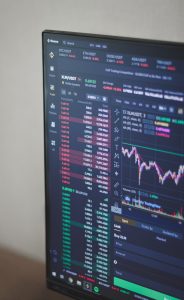Forex trading is an intricate art that requires a deep understanding of various chart patterns. One such pattern that traders often rely on is the break of structure pattern. This pattern can provide valuable insights into market trends and potential trading opportunities. In this article, we will delve into the intricacies of break of structure patterns and explore how traders can identify and effectively utilize them in forex trading.
What is a Break of Structure Pattern?
A break of structure pattern occurs when the price movement breaks a significant level of support or resistance on a forex chart. These levels are typically drawn based on previous price highs and lows, and they act as barriers that the price must overcome to continue its trend. When a break of structure pattern occurs, it signifies a potential change in market direction and presents an opportunity for traders to enter or exit trades.
Identifying Break of Structure Patterns
To effectively identify break of structure patterns, traders must have a solid understanding of support and resistance levels. These levels can be identified by analyzing previous price action, trend lines, moving averages, or using technical indicators such as Fibonacci retracement levels.
When analyzing a forex chart, traders should look for instances where the price has failed to break a certain level multiple times. These levels can be considered as strong support or resistance areas. Once a break of structure pattern occurs, it suggests that the market sentiment has shifted, and the price is likely to move in a new direction.
There are several types of break of structure patterns that traders commonly look for:
1. Breakout: A breakout occurs when the price breaks above a resistance level or below a support level. This pattern indicates a potential continuation of an existing trend or the start of a new trend. Traders often wait for a breakout confirmation by observing a significant increase in trading volume or the price closing above/below the breakout level.
2. False Breakout: A false breakout happens when the price briefly breaks above a resistance level or below a support level but quickly reverses and returns back to the previous range. This pattern can trick inexperienced traders into entering trades in the wrong direction, hence it is crucial to wait for confirmation before taking any action.
3. Pullback: A pullback occurs when the price breaks a support level and then retraces back to retest it as a new resistance level. This pattern often presents an opportunity for traders to enter trades in the direction of the breakout.
Utilizing Break of Structure Patterns in Forex Trading
Once traders have identified a break of structure pattern, they can utilize it to make informed trading decisions. Here are a few strategies traders commonly employ:
1. Breakout Trading Strategy: Traders can enter trades in the direction of the breakout by placing buy or sell orders once the price has confirmed a breakout. Stop-loss orders can be placed below the breakout level to manage risk, while take-profit orders can be set based on projected price targets or previous swing highs/lows.
2. Pullback Trading Strategy: Traders can wait for a pullback after a break of structure pattern and enter trades when the price tests the previously broken support/resistance level. This strategy aims to capitalize on potential trend reversals or continuations.
3. False Breakout Strategy: Traders can take advantage of false breakouts by entering trades in the opposite direction once the price reverses. This strategy requires patience and discipline to wait for confirmation before taking action.
In conclusion, break of structure patterns provide valuable insights into market trends and potential trading opportunities in forex trading. By effectively identifying and utilizing these patterns, traders can enhance their decision-making process and increase their chances of success. However, it is essential to combine break of structure patterns with other technical and fundamental analysis tools to validate trading signals and manage risk effectively.






